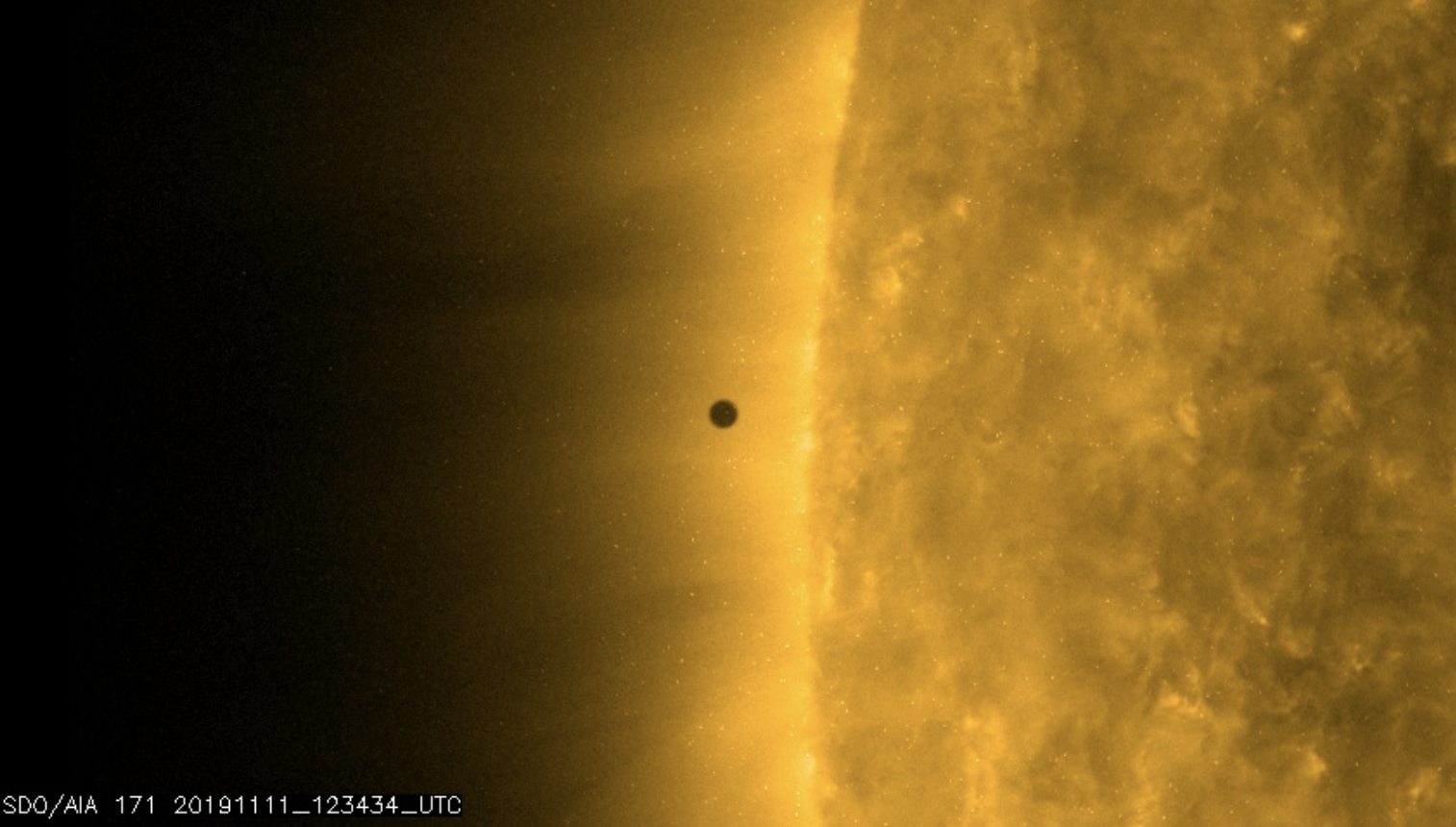The Mercury Transit of 2019 Has Begun!
Grab your solar eclipse glasses or protected astronomical equipment, because Mercury is marching across the sun as we speak.
The closest planet to the sun began its transit — an apparent passage across the sun from the perspective of Earth — at 7:35 a.m. EST (1235 GMT) and will continue its journey for 5.5 hours. It will be visible in the U.S.and many other parts of the world. Be sure to check this event out, as it will be the last time until 2032 that Mercury transits the sun. And that occurrence won't be visible in the U.S.; Americans will have to wait until 2049 for the next visible event.
You can watch the Mercury transit of 2019 live here, courtesy of Slooh.com. You can also watch the Slooh webcast directly here on YouTube.
Mercury made first contact (when its disk was externally tangent to the sun) at 7:35 a.m. EST (1235 GMT), just past sunrise on the U.S. East Coast. Its second contact — when the disk appeared in full silhouette on the sun, took place two minutes later, at 7:37 a.m. EST (1237 GMT). This included a brief "black drop effect" (or black teardrop shape) that made Mercury appear to connect to the solar disk edge. This effect happens due to imperfections in telescope optics.
- Mercury Transit 2019: Where and How to See It on Nov. 11
- Video: The Mercury Transit of 2019 Explained
- How to Watch the Mercury Transit Live Online
- Find a Mercury Transit 2019 Viewing Event Near You!
Look at little Mercury go! #MercuryTransit pic.twitter.com/GuV35X1NYHNovember 11, 2019
Coming up later today will be third contact (1:02 p.m. EST, 1802 GMT), when you can see the black drop effect again. Mercury will be at the other edge of the sun and starting to exit. The transit will complete at 1:04 p.m. EST (1804 GMT) when Mercury exits the sun and completes fourth contact.
You can easily watch the event safely online on channels such as Slooh or the Virtual Telescope, or through a feed from NASA's Solar Dynamics Observatory spacecraft.

Mercury is too small to spot with the naked eye, but you can watch it yourself with a telescope or a pair of binoculars as long as they are equipped with proper solar protection. (Never look at the sun, even briefly, without protecting your eyes and equipment.) You can also go to a local astronomy club or event that has similarly equipped telescopes or binoculars.
Get the Space.com Newsletter
Breaking space news, the latest updates on rocket launches, skywatching events and more!
This will be the fourth time this century (out of 14 occasions) that Mercury will cross the sun from Earth's perspective. Transits of Mercury are relatively rare because usually, when the planet is near the sun from Earth's perspective, it is slightly "out of plane" — meaning that it passes above or below the sun. Occasionally, however, the planets and the sun all line up in the sky and it's possible to see Mercury transiting across the face of our star. Scientists are taking advantage of the opportunity to perform some science related to studying Mercury's tenuous atmosphere, while citizen scientists have some projects of their own.
Editor's Note: Visit Space.com on Nov. 11 to see live webcast views of the rare Mercury transit as shown from telescopes on Earth and in space, along with complete coverage of the celestial event. If you SAFELY capture a photo of the transit of Mercury and would like to share it with Space.com and our news partners for a story or gallery, you can send images and comments in to spacephotos@space.com.
- How Far is Mercury From the Sun?
- See the Sharpest-Ever View of Mercury's Transit Across the Sun
- Mercury Transit of the Sun: Why Is It So Rare?
Follow Elizabeth Howell on Twitter @howellspace. Follow us on Twitter @Spacedotcom and on Facebook.

Join our Space Forums to keep talking space on the latest missions, night sky and more! And if you have a news tip, correction or comment, let us know at: community@space.com.

Elizabeth Howell (she/her), Ph.D., was a staff writer in the spaceflight channel between 2022 and 2024 specializing in Canadian space news. She was contributing writer for Space.com for 10 years from 2012 to 2024. Elizabeth's reporting includes multiple exclusives with the White House, leading world coverage about a lost-and-found space tomato on the International Space Station, witnessing five human spaceflight launches on two continents, flying parabolic, working inside a spacesuit, and participating in a simulated Mars mission. Her latest book, "Why Am I Taller?" (ECW Press, 2022) is co-written with astronaut Dave Williams.









